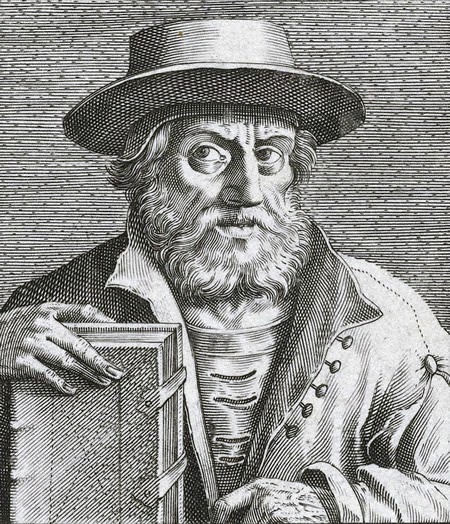 |
| Manuel Chrysoloras |
Manuel Chrysoloras was born in approximately 1350, in Constantinople, only about a century before the city— and its Eastern Roman Empire, or Byzantine Empire— fell to the Ottoman Turks under Mehmed II in 1453. He became a student of Georgius Gemisthos Pletho, who represented the Greek Church at the Council of Florence in 1439.
The Italian Renaissance had brought to Italy a great respect for the teachings of the ancient world, which had been kept intact in Constantinople for over 1,000 years. Under Pletho’s inspiration, Cosimo de’ Medici founded the famous Academy in Florence.
In 1390 Chrysoloras went to Venice to try to rouse the western Europeans against the menace posed by the Turks, then ruled by Sultan Bayezid I. He was sent as the personal emissary of Emperor Manuel I Palaeologus. There was much enmity between the west and the Byzantine Empire, and a large cause of it was the Fourth Crusade of 1204.
Instead of sailing for the Holy Land to fight the Muslims, the ruling doge of Venice, Enrico Dandolo, had used the crusaders to conquer and sack Constantinople, which Venice saw as its chief rival for trade with the east. Manuel’s Palaeologus dynasty had come to power in 1261, when the Byzantines rallied under Michael Palaeologus to throw the western European knights out of Constantinople, who had ruled it since the Fourth Crusade.
But as with Pletho before him any lingering ill feelings did not prevent the Italians from giving Chrysoloras a warm welcome. After his diplomatic mission, he returned to Constantinople, but the impression he had made remained. In 1396 the chancellor of the University of Florence, Coluccio Salutati, invited him back to teach. He became a highly respected teacher in Florence, continuing to teach the works of Greece and Rome.
He wrote the Erotemata, the original Greek grammar and vocabulary text. The Erotemata became the basic reader of the great humanists. Chrysoloras insisted on expressing a sentence in the same grammar of the translated language. Because of this he is considered to be the father of modern translation. He taught many people but had only five full-time disciples.
He became one of the leaders of the humanist movement in Europe and, as with Pletho before him, most likely represented a great stimulus to the revival of ancient learning that marked the entire Renaissance in western Europe. He spent the rest of his life teaching in the west, serving at the universities of Florence, Bologna, and Rome.
Later in his career the scholar resumed diplomatic work. In 1408 he represented Manuel again in an embassy to the court of France’s King Charles VI. He was chosen to represent the Greek Orthodox Church in an embassy to the Emperor Sigismund of the Holy Roman Empire in 1413.
Chrysoloras sought a church council to help heal the wounds between the western and eastern Christian churches that dated from the Great Schism of 1054. This was especially needed after the failure of the crusade that had set forth in 1396 to fight the Turks. However, on his last diplomatic mission to see Emperor Sigismund, Manuel Chrysolaras died in the city of Constance, where the council was to be held, in 1415.
EmoticonEmoticon